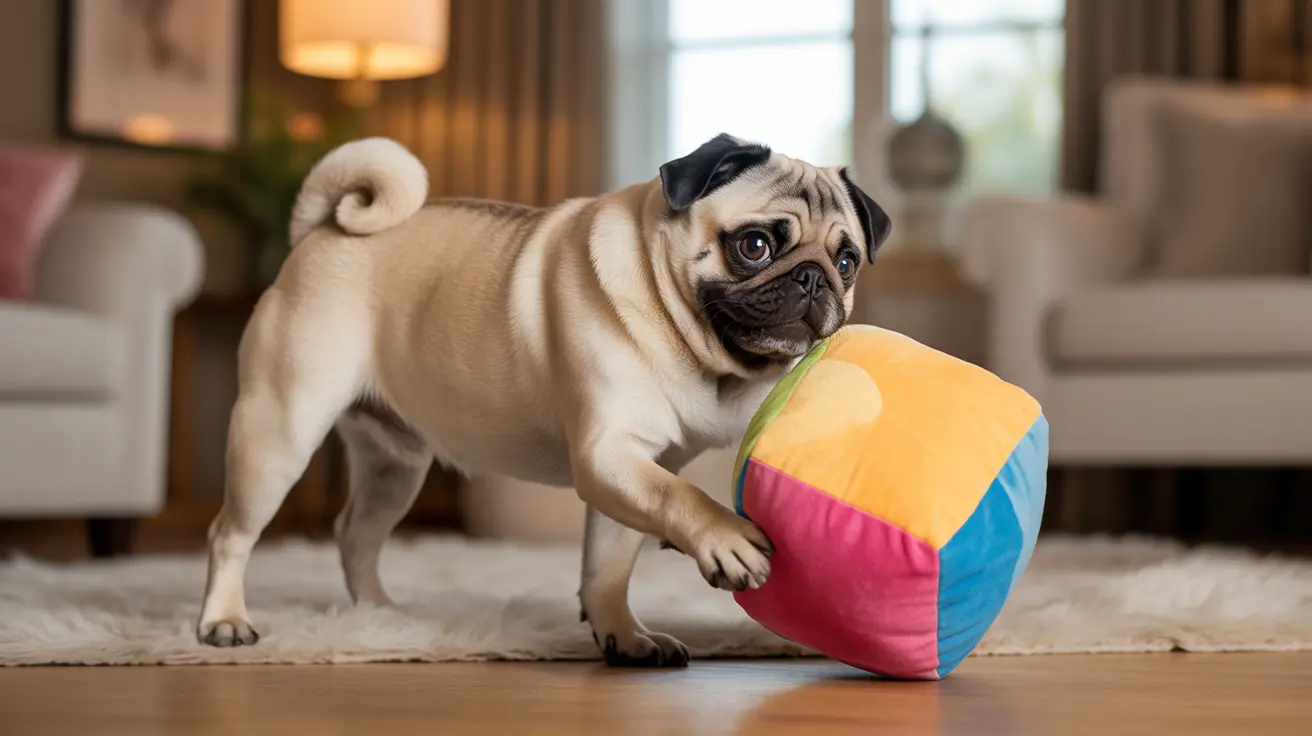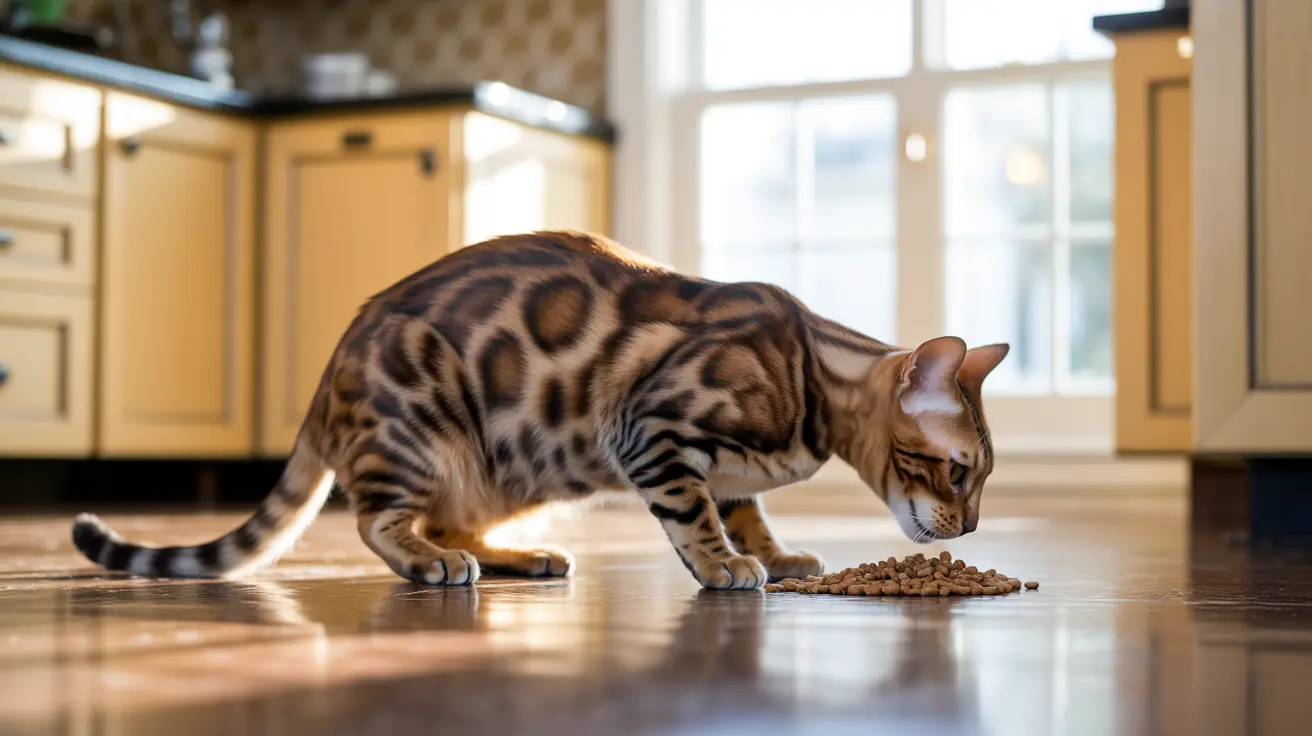The Complete Indoor Dog Trick Training Guide: Transform Your Home into a Canine Academy
Indoor dog trick training guide enthusiasts know that rainy days and winter months don't have to mean bored pets and restless energy. Whether you're dealing with harsh weather conditions, limited outdoor space, or simply want to strengthen your bond with your furry companion, teaching your dog entertaining tricks indoors can be just as rewarding and effective as outdoor training sessions. The key lies in understanding that dogs need both physical and mental stimulation to stay fit, healthy, and happy, and indoor trick training delivers both in spades.
From impressive party tricks that will wow your guests to practical skills that make daily life easier, this comprehensive indoor dog trick training guide will transform your living room into a professional training academy. You'll discover step-by-step methods for teaching engaging tricks like dice rolling, floor rolls, and handkerchief fetching, while learning how to create the perfect indoor training environment that keeps your dog mentally stimulated and behaviorally balanced.
Essential Foundations for Indoor Dog Trick Training
Before diving into specific tricks, successful indoor dog trick training guide implementation requires understanding the fundamental principles that make indoor sessions effective. Dogs possess approximately 45 times more scent receptors than humans, making them naturally equipped for indoor activities that engage their powerful sense of smell and problem-solving abilities.
The foundation of any successful indoor training session begins with ensuring your dog has mastered basic obedience commands. Commands like "sit," "stay," "down" (or "Platz"), and "come" serve as building blocks for more complex tricks. These basic skills provide the structure and communication framework necessary for teaching entertaining tricks that will impress guests and keep your dog mentally engaged.
Physical activity requirements don't disappear indoors, but they can be satisfied through targeted exercises. Dogs lacking adequate stimulation might exhibit destructive behaviors such as chewing socks or furniture, making indoor trick training an excellent preventive measure. Short bursts of 5-10 minute training sessions using positive reinforcement prove most effective, allowing dogs to maintain focus while building skills progressively.
Creating the Perfect Indoor Training Environment
Your indoor training space should be safe, distraction-free, and equipped with the right tools for success. Start by selecting a room with enough space for your dog to move comfortably but not so large that they become distracted by other activities. Remove fragile items and ensure the flooring provides good traction to prevent slips during active tricks.
Essential equipment for indoor trick training includes soft props like large cubes for dice rolling, handkerchiefs for fetching tricks, and designated tug toys for interactive games. Household items like boxes, pillows, and broomsticks can be repurposed to create obstacle courses and training props. Always prioritize safety by inspecting props regularly and choosing materials that won't harm your dog if chewed or played with roughly.
Timing plays a crucial role in training success. Schedule sessions when your dog is alert but not overly excited, typically after a light meal or moderate exercise. Keep sessions short and end on a positive note to maintain enthusiasm for future training opportunities.
Teaching the Dice Rolling Trick
The dice rolling trick combines entertainment value with practical obedience training, making it perfect for impressing guests while reinforcing important commands. This trick requires a soft, large cube that's safe for your dog to mouth and manipulate without risk of injury.
Begin by introducing the cube as a toy, allowing your dog to investigate and become comfortable with it. Start with the "Bring" command, encouraging your dog to pick up the cube and carry it to you. Use enthusiastic praise and treats to reinforce successful attempts. Once your dog consistently brings the cube, introduce the "Aus" (release) command, teaching them to drop the cube on cue.
The progression involves gradually introducing the specific "Würfeln" (roll dice) command while your dog is holding the cube. With consistent practice and positive reinforcement, your dog will learn to associate this command with the complete action sequence of picking up, carrying, and releasing the cube. The key to success lies in breaking down the complex behavior into manageable steps and maintaining consistent praise throughout the learning process.
Mastering the Floor Roll Trick
The floor roll trick showcases your dog's agility and responsiveness while providing excellent physical exercise in a confined space. This impressive trick requires your dog to have solid foundations in "Platz" (down) and "Bleib" (stay) commands before attempting the rolling motion.
Start with your dog in the down position, ensuring they're comfortable and relaxed. Using a treat as a lure, slowly guide your dog's head to one side while they remain lying down. The natural tendency will be for their body to follow their head, creating the rolling motion. Introduce the command "Rolle" or "Dreh dich" (turn around) as you guide this movement.
Gradual guidance is essential for success. Initially, you may need to gently assist your dog's body through the rolling motion while maintaining the treat lure. As your dog begins to understand the desired movement, reduce physical assistance and rely more heavily on the verbal command and treat motivation. Consistent practice sessions will develop muscle memory and confidence in performing this entertaining trick.
The Handkerchief Fetching Trick
Teaching your dog to fetch a handkerchief creates a charming party trick while reinforcing retrieval skills that can be applied to practical situations. This trick involves training your dog to pull a handkerchief from your pocket on command, creating an amusing and interactive demonstration.
Begin by wrapping a small treat inside a clean handkerchief, allowing the scent to permeate the fabric. Place the handkerchief partially in your pocket, leaving enough fabric exposed for your dog to grab. Encourage your dog to investigate and pull the handkerchief using the command "Hatschi" (a playful sneeze sound that adds entertainment value to the trick).
As your dog successfully retrieves the handkerchief with the treat inside, gradually reduce the frequency of treats while maintaining enthusiastic praise. Eventually, your dog will respond to the "Hatschi" command alone, pulling the handkerchief from your pocket without needing a food reward. This progression from treat-based motivation to command-based response demonstrates the power of consistent positive reinforcement in dog training.
Advanced Indoor Tricks and Variations
Once your dog masters basic tricks, expand their repertoire with advanced variations that build on established skills. The "spin dog spin" trick teaches directional control by training your dog to spin in circles using treat lures and distinct cue words like "whirl" and "dash" for different directions. This trick provides excellent physical exercise while improving coordination and responsiveness.
For smaller dogs without back problems, the "dancing doggo" trick involves training them to stand and spin on their hind legs. This impressive trick requires careful attention to your dog's physical limitations and should be taught gradually to prevent strain or injury.
The "paw-some high fives" trick creates an interactive greeting behavior by teaching your dog to paw your open hand on cue. Focus on rewarding the natural pawing behavior without grabbing their paws, allowing your dog to initiate and control the contact.
Safety Considerations and Best Practices
Indoor dog trick training guide safety protocols are essential for preventing injuries and maintaining positive training experiences. Always inspect training props before use, ensuring they're free from sharp edges, small parts that could be swallowed, or materials that might cause allergic reactions. Soft, large cubes should be constructed from dog-safe materials that can withstand enthusiastic play without breaking apart.
Monitor your dog's energy levels throughout training sessions, watching for signs of fatigue or frustration. Panting, excessive drooling, or loss of focus indicate the need for a break. Provide fresh water during longer training sessions and avoid training immediately after meals to prevent digestive issues.
Consider your dog's individual physical limitations when selecting tricks to teach. Senior dogs or those with joint issues may benefit more from mental stimulation tricks like puzzle-solving rather than physically demanding movements like rolling or spinning. Always consult with your veterinarian if you have concerns about your dog's ability to perform specific movements safely.
Troubleshooting Common Training Challenges
Even the most well-planned indoor dog trick training guide sessions can encounter obstacles. Common challenges include lack of motivation, difficulty understanding commands, or inconsistent performance. Address motivation issues by experimenting with different rewards, including high-value treats, favorite toys, or enthusiastic praise to find what resonates most with your individual dog.
If your dog struggles to understand specific commands, break complex tricks into smaller components and master each step before combining them. For example, if the dice rolling trick proves challenging, focus exclusively on the "bring" command before introducing the "release" component.
Inconsistent performance often stems from unclear communication or conflicting cues. Ensure all family members use identical commands and hand signals to avoid confusing your dog. Consistency in timing, rewards, and expectations creates the predictable structure dogs need to succeed in learning new behaviors.
Building on Basic Skills
Successful indoor dog trick training guide implementation creates a foundation for continuous learning and engagement. Once your dog masters fundamental tricks, challenge them with variations that increase complexity and mental stimulation. Teach them to identify specific toys by name, creating a vocabulary that allows for interactive play and impressive demonstrations of canine intelligence.
Scent work games provide excellent mental exercise and can be adapted for indoor spaces. Hide treats in various locations throughout your home, encouraging your dog to use their powerful sense of smell to locate rewards. Start with obvious hiding spots and gradually increase difficulty as your dog's skills develop.
Puzzle toys and treat-dispensing devices complement trick training by providing independent mental stimulation. Rotate different puzzle types to maintain novelty and challenge, preventing boredom while reinforcing problem-solving skills that transfer to trick learning.
Long-term Benefits and Bonding
Beyond entertainment value, consistent indoor dog trick training guide practices strengthen the bond between you and your dog while providing essential mental and physical stimulation. Regular training sessions improve communication, build trust, and create positive associations with learning that benefit all aspects of your relationship.
Mental stimulation from trick training helps prevent destructive behaviors that often stem from boredom or excess energy. A mentally engaged dog is typically calmer, more responsive to commands, and better adjusted to indoor living situations. These benefits extend beyond training sessions, creating a more harmonious household environment.
The confidence dogs gain from mastering new skills translates into improved overall behavior and adaptability. Dogs who regularly engage in trick training often show increased willingness to try new experiences, better stress tolerance, and enhanced problem-solving abilities that serve them throughout their lives.
Frequently Asked Questions
How long should indoor trick training sessions last?
Keep training sessions to 5-10 minutes for optimal results. Short, frequent sessions maintain your dog's attention and prevent frustration while building skills progressively. Multiple brief sessions throughout the day are more effective than single lengthy training periods.
What should I do if my dog isn't motivated by treats during training?
Experiment with different motivators including favorite toys, enthusiastic praise, or interactive play. Some dogs respond better to social rewards than food rewards. You can also try training before meal times when natural hunger increases food motivation.
Is it safe to teach rolling tricks to all dogs?
Not all dogs should perform rolling tricks. Avoid teaching rolls to dogs with back problems, joint issues, or breeds prone to spinal injuries. Senior dogs and those with mobility limitations should focus on mental stimulation tricks rather than physically demanding movements.
How can I prevent my dog from becoming frustrated during training?
End training sessions on a positive note with a successfully completed command. If your dog struggles with a new trick, return to a familiar command they can perform confidently. Keep sessions short and always maintain patience and positive reinforcement.
What household items are safe to use as training props?
Safe household training props include cardboard boxes, soft pillows, clean towels or handkerchiefs, and plastic containers. Avoid items with small parts, sharp edges, or toxic materials. Always supervise your dog when using improvised training equipment.
Can indoor trick training replace outdoor exercise?
While indoor training provides valuable mental and physical stimulation, it cannot completely replace outdoor exercise. Dogs still need regular walks, fresh air, and outdoor exploration for optimal health and wellbeing. Indoor training supplements but doesn't substitute for outdoor activities.
How do I know if my dog is ready to learn advanced tricks?
Your dog should consistently respond to basic commands like sit, stay, down, and come before attempting advanced tricks. They should also show sustained attention during 5-10 minute training sessions and demonstrate enthusiasm for learning new behaviors.
Conclusion
Indoor dog trick training guide mastery transforms rainy days and winter months into opportunities for growth, bonding, and entertainment. By implementing the structured approaches outlined for dice rolling, floor rolls, and handkerchief fetching, along with proper safety considerations and environmental setup, you'll create engaging experiences that satisfy your dog's physical and mental stimulation needs.
Remember that successful indoor training relies on consistency, patience, and positive reinforcement rather than perfection. Each dog learns at their own pace, and celebrating small victories builds confidence and enthusiasm for continued learning. With dedication and the right approach, your indoor dog trick training guide sessions will become highlights of both your days, creating lasting memories while strengthening the special bond you share with your canine companion.






